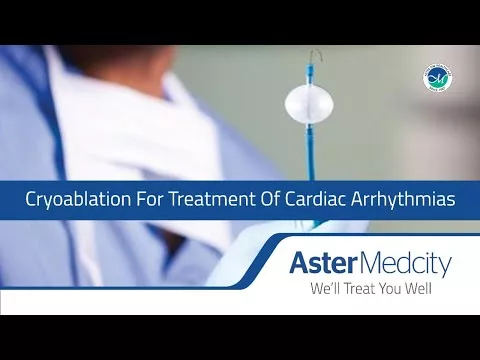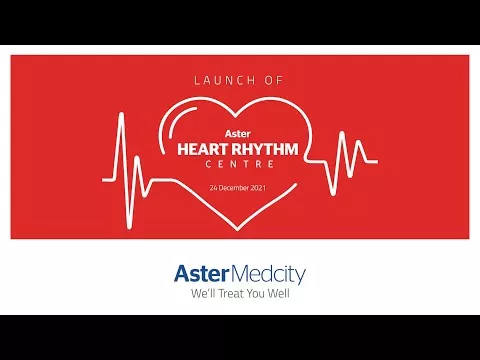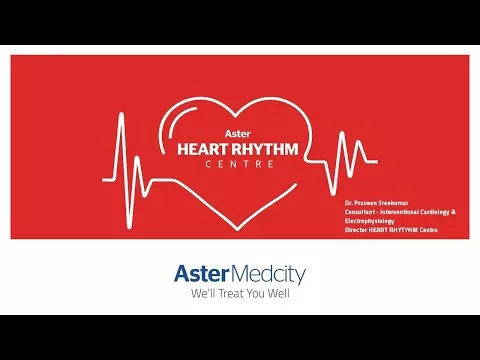What is Pacemaker Implantation?
Pacemaker implantation is a medical procedure that involves the surgical placement of a small electronic device called a pacemaker, typically within the chest area. The pacemaker is used to regulate the electrical activity of the heart and ensure that it beats at a regular rhythm. The procedure is usually performed under local anesthesia, meaning the patient is awake but the area being operated on is numb. A small incision is made in the chest, and the pacemaker leads (thin, insulated wires) are guided through a blood vessel into the heart. The leads are then attached to the heart muscle, and the other ends are connected to the pacemaker device.
The pacemaker device itself is typically about the size of a pocket watch and contains a battery and electronic circuitry. It continuously monitors the heart's electrical activity and, if necessary, sends electrical impulses to stimulate the heart muscle to contract and maintain an appropriate heart rate.
Pacemakers are commonly used to treat various heart rhythm disorders, such as bradycardia (slow heart rate) or certain types of arrhythmias (irregular heart rhythms). The pacemaker ensures that the heart beats at a rate that provides adequate blood flow and oxygen to the body. After the pacemaker implantation, the patient is usually monitored for a short period to ensure that the device is functioning properly. Regular follow-up visits with a cardiologist are necessary to monitor the pacemaker's function, adjust settings if needed, and replace the battery when it runs out, which typically occurs every few years. Overall, pacemaker implantation is a well-established procedure that has helped improve the quality of life for many people with heart rhythm abnormalities.
Why and when the pacemaker implantation is recommended?
Pacemaker implantation is recommended when a person has certain heart rhythm abnormalities or conditions that can be effectively managed or treated with a pacemaker. Some of the common reasons and situations when pacemaker implantation may be recommended include:
- Bradycardia: When the heart beats too slowly, it can cause symptoms such as fatigue, dizziness, fainting, and shortness of breath. If medications or other treatments are unable to adequately control the slow heart rate, a pacemaker may be implanted to regulate the heart's rhythm and ensure it beats at a sufficient rate.
- Heart Block: This is a condition where the electrical signals that regulate the heartbeat are delayed or blocked as they travel from the upper chambers (atria) to the lower chambers (ventricles) of the heart. Depending on the severity of the block, a pacemaker may be recommended to help restore normal electrical conduction and maintain an appropriate heart rate.
- Arrhythmias: Certain types of arrhythmias, such as atrial fibrillation or ventricular tachycardia, may require a pacemaker to be implanted in conjunction with other treatments. In these cases, the pacemaker may be used to coordinate the timing of the heart's contractions or to provide backup pacing if the heart rate becomes too slow.
- Syncope (Fainting) of Unknown Cause: If a person experiences unexplained episodes of fainting or loss of consciousness, further evaluation may reveal an underlying heart rhythm disorder that can be managed with a pacemaker.
- Heart Failure: In some cases of heart failure, where the heart muscle is weakened and unable to pump blood effectively, a special type of pacemaker called a cardiac resynchronization therapy (CRT) device may be recommended. CRT devices coordinate the contractions of the heart's chambers to improve the heart's pumping function.
The decision to recommend pacemaker implantation is made by a cardiologist based on a thorough evaluation of the patient's medical history, symptoms, diagnostic tests (such as electrocardiogram or Holter monitoring), and overall health status. The goal is to improve the person's quality of life, alleviate symptoms, and reduce the risk of serious complications associated with abnormal heart rhythms.
How does pacemaker implantation differ from other treatment options?
Pacemaker implantation differs from other treatment options for heart rhythm disorders in that it directly addresses the underlying electrical abnormalities of the heart by providing continuous electrical stimulation and regulation.
Here are some ways in which pacemaker implantation differs from other treatment options:
- Medications: Medications are commonly used to manage certain heart rhythm disorders. They work by controlling the heart's electrical signals and regulating the heart rate. However, medications may not always be effective in controlling the heart rhythm or may cause side effects. Pacemaker implantation offers a more direct and targeted approach by delivering electrical impulses to regulate the heart's rhythm, often eliminating the need for medication, or reducing its dosage.
- Catheter Ablation: Catheter ablation is a minimally invasive procedure that uses radiofrequency energy or extreme cold to destroy small areas of heart tissue responsible for causing abnormal electrical signals. It is often used for treating specific arrhythmias, such as atrial fibrillation or supraventricular tachycardia. Pacemaker implantation is typically not an alternative to catheter ablation but may be recommended in conjunction with the procedure in certain cases, especially if there is a risk of developing heart block or if the patient already has bradycardia.
- Implantable Cardioverter Defibrillator (ICD): An ICD is a device like a pacemaker but with additional capabilities. It is primarily used to treat life-threatening ventricular arrhythmias, such as ventricular fibrillation or ventricular tachycardia. While pacemakers regulate the heart rate and rhythm, ICDs can detect dangerous arrhythmias and deliver a shock to restore a normal heart rhythm. In some cases, a combination device called a cardiac resynchronization therapy defibrillator (CRT-D) is used, which combines pacemaker and defibrillator functions. The choice between a pacemaker and an ICD depends on the specific heart rhythm disorder and its associated risks.
- Lifestyle Modifications: Lifestyle modifications, such as avoiding triggers, maintaining a healthy diet, exercising regularly, and managing stress, play a crucial role in managing heart rhythm disorders. However, lifestyle changes alone may not always be sufficient to control the heart rhythm or prevent symptoms. Pacemaker implantation provides a more direct and reliable method of maintaining a regular heart rate and rhythm, allowing individuals to lead more active lives without the constant worry of symptoms.
It's important to note that the choice of treatment depends on the specific heart rhythm disorder, its severity, the presence of other underlying conditions, and individual patient factors. A cardiologist will carefully evaluate each case to determine the most appropriate treatment approach, which may involve pacemaker implantation or a combination of therapies.
How is life after pacemaker implantation?
Life after pacemaker implantation can be significantly improved for individuals with heart rhythm disorders. Here are some aspects to consider regarding life after pacemaker implantation:
- Symptom Relief: Pacemakers are designed to regulate the heart's rhythm and ensure it beats at a sufficient rate. By doing so, they help alleviate symptoms associated with bradycardia (slow heart rate), such as fatigue, dizziness, fainting, and shortness of breath. With a properly functioning pacemaker, individuals often experience a significant reduction or elimination of these symptoms, allowing them to engage in regular activities with increased energy and quality of life.
- Improved Exercise Tolerance: For individuals who had limited physical activity due to their heart rhythm disorder, a pacemaker can improve exercise tolerance. By maintaining an appropriate heart rate during exercise, the pacemaker enables individuals to engage in more vigorous activities and lead a more active lifestyle.
- Enhanced Independence: Pacemakers provide continuous monitoring and adjustment of the heart's electrical activity. This reduces the need for frequent medical intervention or hospitalizations related to heart rhythm disorders. Individuals with pacemakers typically experience greater independence and freedom, as they can participate in daily activities without the constant worry of symptoms or the need for immediate medical attention.
- Regular Follow-up Care: After pacemaker implantation, regular follow-up visits with a cardiologist are necessary to monitor the device's function, adjust settings if needed, and ensure optimal performance. These appointments often include a review of the pacemaker's data and assessment of the individual's overall cardiac health. Ongoing care helps ensure that the pacemaker continues to meet the individual's needs and that any potential issues are identified and addressed promptly.
- Lifestyle Considerations: While pacemakers are designed to enhance daily life, there are a few precautions individuals with pacemakers should take. They may need to avoid strong magnetic fields or certain devices that can interfere with the pacemaker's function (e.g., some types of metal detectors or electromagnetic therapy). However, most activities, including travel, exercise, and hobbies, can typically be resumed without significant restrictions.
- Battery Replacement: Pacemakers have batteries that power the device, and these batteries will eventually need to be replaced, usually every few years. The replacement procedure is relatively simple and involves a minor surgical procedure to replace the pacemaker's battery while leaving the leads and device in place.
It's important to note that each person's experience with a pacemaker can vary based on their specific medical condition, lifestyle, and overall health. Regular communication with the cardiologist and adherence to recommended follow-up care are key to ensuring the pacemaker continues to function optimally and provides the desired benefits for the individual's quality of life.
FAQs
At Aster Hospitals we provide the highest quality of care and a transformative experience for all your healthcare needs. With our network of multi-speciality hospitals, specialised doctors, and world-class technology, we bring global standards of medical care to our patients.
What is the recovery time after pacemaker implantation
Recovery time varies, but most patients can go home the same day or within 24 hours after the procedure. It's important to follow your doctor's instructions regarding wound care, physical activity restrictions, and medication management. You may be advised to avoid strenuous activities and heavy lifting for a short period to allow for proper healing.
Is pacemaker implantation a painful procedure?
Pacemaker implantation is performed under local anesthesia, so the area where the incision is made is numbed. Most patients do not experience significant pain during the procedure. However, some may feel pressure or discomfort during lead placement or when the leads are tested for proper function.
How long does the pacemaker implantation procedure take?
The procedure typically takes about 1 to 2 hours, but it can vary depending on individual circumstances and any additional procedures that may be performed concurrently.
Blogs
The source of trustworthy health and medical information. Through this section, we provide research-based health information, and all that is happening in Aster Hospital.








